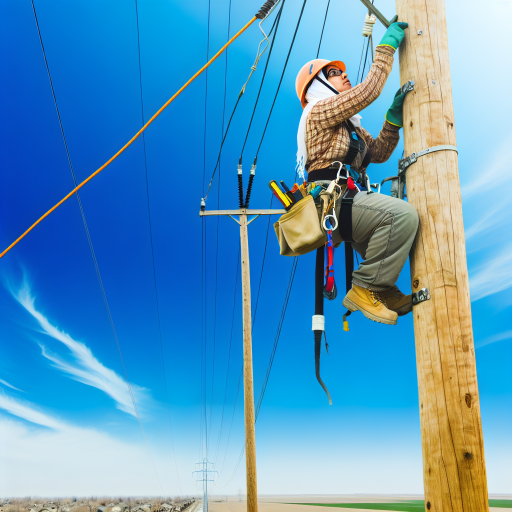Introduction:
The importance of having the right tools for efficient drywall installation cannot be overstated.
Using the right tools can make the process easier and more precise.
By having the appropriate tools on hand, you can ensure that your drywall installation goes smoothly.
The end result will be of high quality.
Understanding the basics of drywall installation
Drywall, also known as plasterboard or wallboard, is a panel made of gypsum plaster pressed between two thick sheets of paper.
It is commonly used in interior construction due to its affordability, ease of installation, and fire resistance.
Basic Steps in Drywall Installation
- Measurement and Cutting: Measure the space where the drywall will be installed. Cut the panels to fit the dimensions using a drywall saw or utility knife.
- Placement: Start at the top of the wall and work downwards. Secure the panels in place with screws or nails.
- Taping and Mudding: Apply drywall tape to cover the seams between panels. Spread joint compound (mud) over the tape to create a smooth surface.
- Sanding: Once the mud has dried, sand the surface to create an even finish.
- Priming and Painting: Apply a coat of primer to the drywall before painting to ensure a professional-looking result.
- Finishing Touches: Install trim, baseboards, and any other finishing touches to complete the installation.
By following these basic steps, you can achieve a professional finish on your drywall installation project.
Remember to use the right tools to make the process more efficient and effective.
Top tools for cutting drywall:
When it comes to cutting drywall for installation, having the right tools is essential to ensure accuracy and efficiency.
Here are the top tools you should have in your arsenal:
- Utility knife
- Drywall saw
- Rotary tool
Utility Knife:
A utility knife with a sharp blade is a must-have tool for cutting drywall.
It allows for precise cuts and clean edges, making it ideal for trimming drywall sheets to size or cutting out openings for outlets and switches.
Drywall Saw:
A drywall saw is specifically designed for cutting through drywall quickly and accurately.
It features a serrated blade that makes it easy to cut through the gypsum core without causing excess damage to the surrounding area.
Drywall saws come in various sizes, including keyhole saws for smaller, more intricate cuts.
Rotary Tool:
A rotary tool equipped with a drywall cutting bit is another handy tool for cutting drywall.
Rotary tools are versatile and can be used for various tasks, including cutting curves, making cutouts for pipes or vents, and trimming edges.
They offer precision and control, especially in tight spaces where other tools may be difficult to maneuver.
Each of these tools plays a key role in achieving smooth and accurate cuts when working with drywall.
By having the right tools at your disposal, you can ensure a professional finish and streamline the installation process.
Transform Your Career Today
Unlock a personalized career strategy that drives real results. Get tailored advice and a roadmap designed just for you.
Start NowFind Out More: The Role of Lumberjacks in the Timber Industry
Essential tools for measuring and marking:
Highlight the importance of accurate measurements in drywall installation.
Recommend tools like a tape measure, T-square, and chalk line for precise marking.
Accurate measurements are crucial in drywall installation to ensure a seamless finish.
One essential tool for measuring is a tape measure, which allows for precise measurements.
A T-square is also vital for ensuring straight and square edges when cutting drywall.
Using a chalk line is recommended for marking guidelines on the drywall for accurate placement.
Without accurate measurements, drywall installation can result in uneven surfaces and unsightly finishes.
Investing in quality measuring and marking tools will save time and improve the overall outcome of the project.
Learn More: How to Become a Certified Pipelayer: A Step-by-Step Guide
Tools for fastening drywall:
When it comes to securing drywall, there are various tools that professionals use to ensure a quick and efficient installation.
Different types of screws and nails:
- Drywall screws: These are specially designed screws with coarse threads to prevent tearing of the drywall paper.
- Drywall nails: These nails have a ringed or fluted shank to provide better holding power in the drywall.
Both screws and nails are essential for fastening drywall securely to the studs of a wall or ceiling.
Importance of using a screw gun or drywall hammer:
- Screw gun: A screw gun allows for rapid installation of drywall screws, reducing the time it takes to secure the panels.
- Drywall hammer: A drywall hammer is used for driving drywall nails with precision and efficiency.
These tools are crucial for professionals to work quickly and accurately when hanging drywall in any construction project.
Learn More: Groundskeeping for Commercial vs. Residential Properties

Tools for Taping and Finishing
When it comes to drywall installation, taping and mudding are crucial steps in achieving a smooth and seamless finish.
Here’s a breakdown of the process and the tools you need:
Process of Taping and Mudding Drywall Seams
- Clean the seams: Before taping, make sure the seams are clean and free of dust or debris.
- Apply the tape: Use a drywall taping knife to embed the paper tape into the joint compound.
- Add mud: Apply a thin layer of joint compound over the tape using a mud pan and taping knife.
- Smooth the seams: Use a sanding block to sand down any uneven or rough spots for a seamless finish.
- Repeat if necessary: Depending on the size of the seams, you may need to apply multiple layers of mud and tape.
Recommended Tools for Taping and Finishing
- Drywall Taping Knife: A flexible knife with a wide blade for applying and smoothing joint compound.
- Mud Pan: A shallow pan with tapered edges for holding and mixing joint compound.
- Sanding Block: A sanding tool with a flat surface for smoothing out dried joint compound.
- Tape Measure: Essential for measuring and cutting drywall tape accurately for seamless seams.
- Utility Knife: Use for cutting drywall tape, trimming excess joint compound, and making precise cuts.
Having the right tools for taping and finishing drywall seams is essential for achieving a professional-looking finish.
With these tools and proper technique, you can achieve a smooth and seamless finish for your drywall installation project.
Delve into the Subject: Career Path: Becoming a Successful Drywall Installer
Showcase Your Business Today
Reach thousands of readers actively exploring professional services. Publish your business profile and grow your audience now.
Publish NowSafety Gear for Drywall Installation:
When it comes to drywall installation, safety should always be a top priority.
Wearing the proper safety gear not only protects you from potential injuries but also ensures a smooth and efficient installation process.
- Emphasize the importance of wearing safety gear during drywall installation.
- Recommend safety equipment such as gloves, goggles, and a dust mask to protect against injuries and dust inhalation.
Gloves: One of the most essential pieces of safety gear for drywall installation is a good pair of gloves. These will protect your hands from cuts, scrapes, and potential injuries when handling sharp edges of drywall sheets.
Goggles: To shield your eyes from any debris or dust that may be generated during the installation process, wearing goggles is highly recommended. This will prevent eye irritation and potential eye injuries caused by flying particles.
Dust Mask: Dust inhalation can be a serious issue during drywall installation, as the process can generate a significant amount of dust. Wearing a dust mask will help protect your respiratory system and prevent any respiratory issues caused by inhaling dust particles.
Investing in quality safety gear is crucial for a safe and efficient drywall installation process.
By wearing gloves, goggles, and a dust mask, you can protect yourself from potential injuries and ensure a successful installation project.
Top Tools for Efficient Drywall Installation
When it comes to drywall installation, having the right tools can make all the difference in the efficiency and quality of the job.
Listed below are some of the top tools that every professional or DIY enthusiast should have in their arsenal:
Cordless Drill
A cordless drill is essential for driving screws into the drywall quickly and efficiently.
Drywall T-Square
A drywall T-square is perfect for marking and cutting straight lines on the drywall.
Drywall Lift
A drywall lift can save you time and effort by hoisting the drywall sheets into place for you.
Drywall Screw Gun
A drywall screw gun is specially designed for quickly driving screws into the drywall without over-tightening.
Utility Knife
A sharp utility knife is essential for cutting out holes for outlets, switches, and other obstructions in the drywall.
Mud Pan and Taping Knife
A mud pan and taping knife are necessary for applying joint compound and tape, resulting in smooth and seamless joints.
Drywall Router
A drywall router is ideal for cutting out precise holes for light fixtures and other fixtures on the drywall.
Stud Finder
A stud finder is crucial for locating the studs behind the drywall, ensuring that the screws are anchored securely.
Essential Tools for Quality Drywall Work
Investing in quality tools is vital for efficient and professional drywall installation.
With the right tools, you can save time, effort, and ensure a high-quality finish for your project.
So, make sure to equip yourself with these essential tools before taking on your next drywall installation project!
Additional Resources
Revision of T.O.P., with public comments incorporated
Pub 207 Sales and Use Tax Information for Contractors — January …
[E-Books for Sale]
The Big Book of 500 High-Paying Jobs in America: Unlock Your Earning Potential
$19.99 • 500 High-Paying Jobs • 330 pages
Explore 500 high-paying jobs in America and learn how to boost your career, earn more, and achieve success!
See All 500 High-Paying Jobs of this E-Book
1001 Professions Without a Degree: High-Paying American Jobs You Can Start Now
$19.99 • 1001 Professions Without a Degree • 174 pages
Discover 1001 high-paying jobs without a degree! Unlock career tips, skills, and success strategies for just $19.99!




